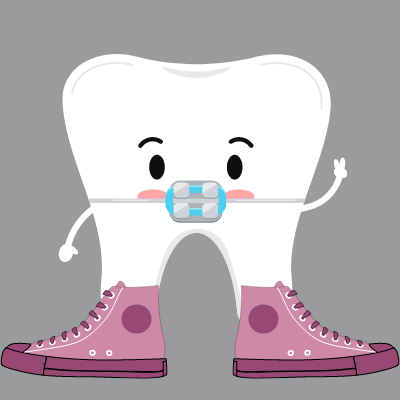The evidence is undeniable: braces are an essential element of modern dental care. Not only do braces improve the appearance of the smile, but they also prevent dental caries (cavities) by making regular brushings and cleanings more effective. Dr. Dougherty recommends orthodontics for many different oral health issues, not just to straighten teeth.
If you have been considering orthodontic treatment but still have questions about how the procedure works, this post is for you.
Before addressing how orthodontics works, we must first address what orthodontic intervention attempts to do. Orthodontics is a multi-purpose discipline with multiple reasons for use, such as:
- Closing wide gaps between the teeth
- Making sure the tips of the teeth are aligned
- Straightening crooked teeth
- To improve speech or eating (oral function)
- To improve the long-term health of gums and teeth
- To prevent long-term excessive wear or trauma (of the teeth)
- Treating an improper bite
There are quite a few benefits to gain through pursuing a healthy smile through orthodontics. Once your teeth are in their proper positions, you will be better able to talk, eat, smile, and maintain good oral health. But how does orthodontics work?
Understanding the Basics
Standard braces have four basic components: brackets, bands, archwires, and ties (also called the “o-ring”). Brackets are affixed directly to the tooth via a bonding material (glue) or a metal band. The shape and size of the tooth determine which sort of bond is used.
Next, thin archwires run from bracket to bracket, creating a system capable of exerting pressure on the teeth. Sometimes springs are placed on the archwires to push, pull, or otherwise create pressure between teeth.
Once the wires have been run through the brackets, they are held in place via small circular elastics. The teeth move when external pressure is exerted on them through this system.
Braces Affect What Lies Beneath
When braces exert pressure on the teeth, it is not just the teeth that are affected. The teeth are able to maintain a changed position because of a process called bone remodeling.
As braces put pressure on teeth, the periodontal membrane under the gums shifts as well, either stretching or contracting. Through this system, the teeth are slightly loosened. Once the teeth are in their proper position, the bone can grow around the tooth to support its new position. This procedure takes place many times through the orthodontic process until your teeth have reached their target locations.
Additional Appliances
Sometimes a person’s particular needs require additional appliances to ensure the complete success of orthodontic treatment. Additional appliances used in orthodontic treatment may include the following:
- Temporary Anchorage Devices (TADs): mini-screws used temporarily to apply extra pressure to teeth.
- Rubber Bands (also called Elastics): used to apply force to teeth.
- Additional appliances such as HERBST and RPE may be used
After Removal
After braces are removed, the process is not complete. Because everything in nature tends toward disorder, the teeth often desire to return to their previous state. To that end, Dougherty Orthodontics always fits their patients with retainers to be worn after braces are removed. Some retainers are removable, and others are fixed, but all help protect your investment and keep your smile in top shape.
Although pursuing a healthier smile through orthodontic treatment may seem daunting at first, the truth is that nothing could be simpler. Your investment in time and effort will be well worth it in the end.
Dr. Stefanie Dougherty of Dougherty Orthodontics is a highly qualified orthodontist with years of experience and training in her field. Her expert team works hard to make sure you feel comfortable during all phases of your treatment plan and want to make sure you feel like part of the Dougherty family. If you’re ready to choose braces and start your journey to a new smile, contact Dougherty Orthodontics at (636) 825-1000 for your complimentary consultation.
